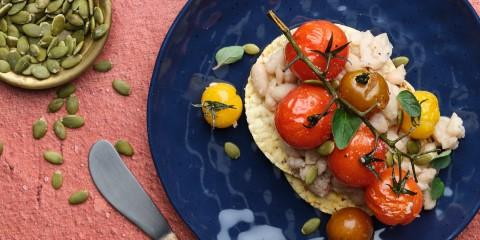How To Eat in A Way Which May Reduce Musculoskeletal Pain

If you are one of the many people who suffer debilitating chronic pain due to musculoskeletal pain, you are not alone. There are over 150 types of musculoskeletal condition which cause musculoskeletal pain and it is a leading cause of disability.
Musculoskeletal pain can be defined as a complex health condition which effects the musculoskeletal structures of your body. It causes recurrent and persistent pain in the muscles, ligaments, tendons, and bones in your body. Areas which are common places of musculoskeletal pain include the shoulders, neck, knees and back.
There are number of different lifestyle factors which can promote or help to reduce musculoskeletal pain. One of these lifestyle factors in the energy density of your diet or the number of calories you eat each day.
If you are searching for ways to reduce musculoskeletal pain it may be beneficial to reduce the energy density of your diet. A healthy body weight reduces the amount of long term or chronic inflammation that your body experiences and consequently, can help to reduce musculoskeletal pain.
Looking into the details, a lower energy dense diet which includes more water and fibre from plant foods appears to be beneficial. Plant foods are a good source of both fibre and water. These include foods like vegetables, fruits, nuts, seeds, legumes, and wholegrains. Research also supports the inclusion of low-fat dairy and lean meats to help reduce musculoskeletal pain.
In contrast, diets which are higher in energy density or have more calories than your body needs to maintain a healthy weight is linked to increased occurrence of musculoskeletal pain. It is not only the calories which make a difference but the types of foods you choose to eat. Foods high in refined carbohydrates, high in total fat and specifically animal fats, processed meats and foods low in fibre and water are linked to increased occurrence of musculoskeletal pain.
The proposed reasons behind the increased risk of musculoskeletal pain with these types of foods is they alter your gut microbiome. The alteration changes the amount and types of microbes which live in your gut to promote inflammation. These microbes send pro-inflammatory messages all throughout your body and include your musculoskeletal structures.
In addition, there is lack of foods which have antioxidants that help to remove the excess free radicals which are causing oxidative stress. The importance of a diet which is rich in plant-based foods is proposed to help reduce musculoskeletal pain because of the fibre as well as antioxidants, phytochemicals, and vitamins.
To make this an easy adjustment into your pattern of eating try to structure your meal to be a healthy plate model. This plate is made by filling half your plate with produce and a quarter of your meal whole grains, or whole grain containing foods like whole grain rice, pasta, couscous, or Corn Thins slices. In addition, try swapping a meat protein for a plant-based alternative once or twice a week. This can include legumes, beans, nuts, seeds, and tofu. Also, try including a plant food with each meal or snack like a piece of fruit with yoghurt or vegetable sticks with hummus dip.
Take home message: A diet which gives your body more calories than it needs to maintain a healthy weight may increase musculoskeletal pain. Eating a diet rich in whole foods which include a variety of plant-based foods is recommended. By increasing the amount of dietary fibre in your diet this can help to increase feelings of fullness and keep you satisfied for longer between meals. Overall, this can help to reduce your overall energy intake in a day and may help to reduce musculoskeletal pain.
References:
- Bahrampour N, Rasaei N, Gholami F, Clark CCT. The Association Between Dietary Energy Density and Musculoskeletal Pain in Adult Men and Women. Clin Nutr Res. 2022 Apr 26;11(2):110-119. doi: 10.7762/cnr.2022.12.110. PMID: 35559001; PMCID: PMC9065393.
- Elma Ö, Yilmaz ST, Deliens T, Clarys P, Nijs J, Coppieters I, Polli A, Malfliet A. Chronic musculoskeletal pain and nutrition: where are we and where are we heading? PM R 2020;12:1268-78.
- Correa-Rodríguez M, González-Jiménez E, Fernández-Aparicio Á, Luis Gómez-Urquiza J, SchmidtRioValle J, Rueda-Medina B. Dietary energy density is associated with body mass index and fat mass in early adulthood. Clin Nurs Res 2021;30:591-8.
- Yarizadeh H, Setayesh L, Majidi N, Rasaei N, Mehranfar S, Ebrahimi R, Casazzza K, Mirzaei K. Nutrient patterns and their relation to obesity and metabolic syndrome in Iranian overweight and obese adult women. Eat Weight Disord. Forthcoming 2021.
- Towery P, Guffey JS, Doerflein C, Stroup K, Saucedo S, Taylor J. Chronic musculoskeletal pain and function improve with a plant-based diet. Complement Ther Med 2018;40:64-9.
- Brain K, Burrows TL, Bruggink L, Malfliet A, Hayes C, Hodson FJ, Collins CE. Diet and chronic noncancer pain: the state of the art and future directions. J Clin Med 2021;10:5203.
- Andrew M Briggs, BSc(Physio)Hons, PhD, Marita J Cross, BSc (Hons), MPH (Hons), PhD, Damian G Hoy, BAppSc(Physio), MPH, PhD, Lídia Sànchez-Riera, MD, PhD, Fiona M Blyth, BSc (Med), MBBS (Hons), MPH, PhD, FAFPHM, Anthony D Woolf, BSc, MBBS, FRCP, Lyn March, MBBS, MSc, PhD, FAFPHM, FRACP, Musculoskeletal Health Conditions Represent a Global Threat to Healthy Aging: A Report for the 2015 World Health Organization World Report on Ageing and Health, The Gerontologist, Volume 56, Issue Suppl_2, April 2016, Pages S243–S255, https://doi.org/10.1093/geront/gnw002